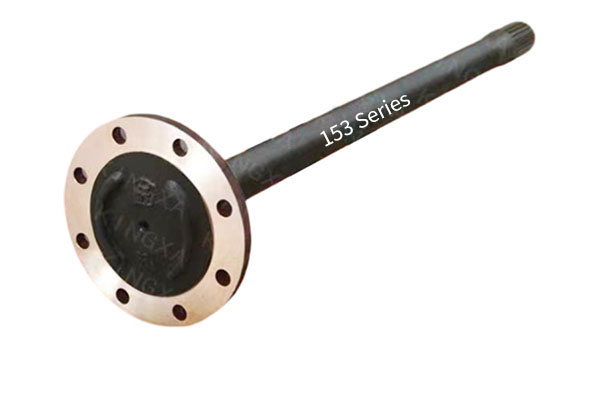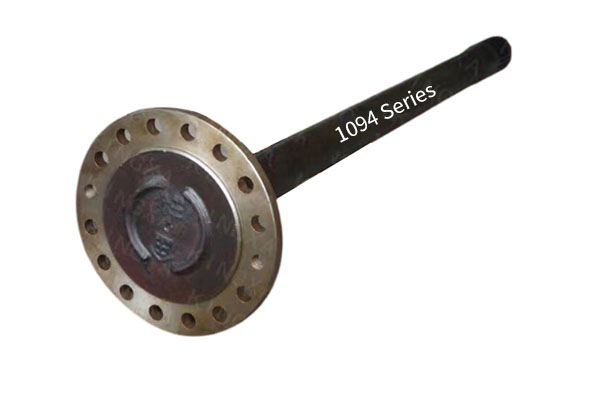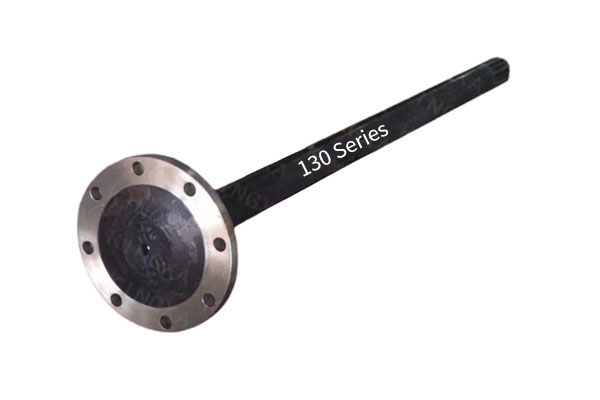Stress Analysis and Optimization Design of Light Vehicle Rear Axle Half Shaft
Release Time : 2024-10-31
As an important component of the automobile transmission system, the stress state of Light Vehicle Rear Axle Half Shaft is directly related to the performance and service life of the whole vehicle. Stress analysis is the basis of optimization design. By deeply studying the stress conditions of the half shaft, we can design a more reasonable structure for it.
During the transmission process, the half shaft mainly bears the torque from the differential, as well as various forces and moments caused by the reaction force of the road to the wheel, including vertical force, longitudinal force and lateral force. These complex stress conditions require the half shaft to have good strength and stiffness to ensure that it can work stably under various working conditions.
Based on the stress analysis, we can optimize the design of the half shaft. First, the mechanical properties of the half shaft can be improved by reasonable material selection, such as selecting high-strength and high-toughness materials. Secondly, the structural shape and size of the half shaft can be optimized to reduce stress concentration and improve the load-bearing capacity. For example, measures such as rounded corner transition and increasing the journal size can be used to reduce stress concentration.
In addition, the optimization design should also consider the manufacturing process and cost of the half shaft. Under the premise of ensuring performance, the structure should be simplified as much as possible to reduce manufacturing costs. At the same time, a reasonable heat treatment process can also significantly improve the mechanical properties and durability of the half shaft.
In summary, the force analysis and optimization design of the Light Vehicle Rear Axle Half Shaft is a comprehensive process, which requires comprehensive consideration of multiple factors such as materials, structure, manufacturing process and cost. Through scientific force analysis and optimization design, we can design a more reasonable and reliable structure for the Light Vehicle Rear Axle Half Shaft, improve its service life and vehicle performance. This will provide strong technical support for the research and development and production of light vehicles and promote the sustainable development of the automotive industry.
During the transmission process, the half shaft mainly bears the torque from the differential, as well as various forces and moments caused by the reaction force of the road to the wheel, including vertical force, longitudinal force and lateral force. These complex stress conditions require the half shaft to have good strength and stiffness to ensure that it can work stably under various working conditions.
Based on the stress analysis, we can optimize the design of the half shaft. First, the mechanical properties of the half shaft can be improved by reasonable material selection, such as selecting high-strength and high-toughness materials. Secondly, the structural shape and size of the half shaft can be optimized to reduce stress concentration and improve the load-bearing capacity. For example, measures such as rounded corner transition and increasing the journal size can be used to reduce stress concentration.
In addition, the optimization design should also consider the manufacturing process and cost of the half shaft. Under the premise of ensuring performance, the structure should be simplified as much as possible to reduce manufacturing costs. At the same time, a reasonable heat treatment process can also significantly improve the mechanical properties and durability of the half shaft.
In summary, the force analysis and optimization design of the Light Vehicle Rear Axle Half Shaft is a comprehensive process, which requires comprehensive consideration of multiple factors such as materials, structure, manufacturing process and cost. Through scientific force analysis and optimization design, we can design a more reasonable and reliable structure for the Light Vehicle Rear Axle Half Shaft, improve its service life and vehicle performance. This will provide strong technical support for the research and development and production of light vehicles and promote the sustainable development of the automotive industry.







